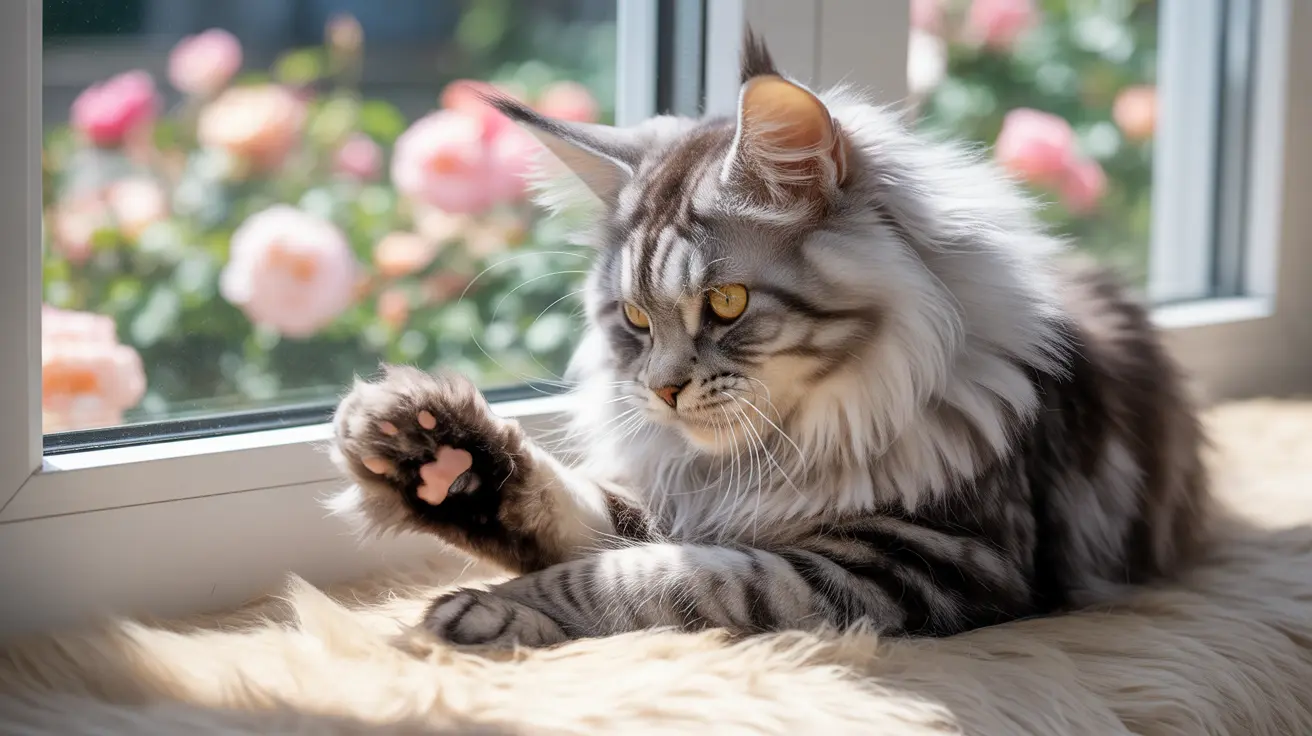The Three-Layer Structure of Cat Paw Pads
Cat paw pads consist of three distinct layers, each serving specific purposes in supporting your cat's movement and protection:
The Tough Outer Layer (Epidermis)
The epidermis forms the durable exterior of the paw pad, featuring thick, keratinized cells that protect against wear and tear. This layer is remarkably resistant to abrasion, allowing cats to traverse various surfaces safely.
The Flexible Middle Layer (Dermis)
Beneath the epidermis lies the dermis, containing a complex network of collagen and elastic fibers. This layer houses blood vessels and nerves, providing both flexibility and sensory feedback to your cat.
The Cushioning Inner Layer (Subcutaneous)
The innermost layer consists of specialized fatty tissue compartments that act as natural shock absorbers. These adipose-filled chambers help distribute pressure and impact forces when your cat walks, runs, or jumps.
Essential Components and Their Functions
The composition of cat paw pads includes several key materials that work together:
- Collagen fibers for strength and structure
- Elastic tissue for flexibility
- Adipose (fat) tissue for cushioning
- Blood vessels for circulation
- Nerve endings for sensory input
- Scent glands for territorial marking
Remarkable Features and Adaptations
Cat paw pads possess several unique characteristics that make them extraordinary:
Shock Absorption Capabilities
The specialized structure allows cats to absorb impact forces several times their body weight, enabling them to land safely from impressive heights.
Temperature Regulation
The pads contain special blood vessels that help regulate body temperature and protect your cat's feet from extreme heat or cold.
Sensory Function
Highly sensitive nerve endings in the pads help cats assess surface textures, temperatures, and vibrations, contributing to their exceptional hunting abilities.
Common Health Considerations
While cat paw pads are incredibly resilient, they can face various health challenges:
- Cuts and abrasions from rough surfaces
- Burns from hot pavement
- Cracking in dry conditions
- Infections and allergic reactions
- Pododermatitis (pad inflammation)
Frequently Asked Questions
What are the different layers that make up a cat's paw pads?
Cat paw pads consist of three main layers: the tough outer epidermis, the flexible dermis containing blood vessels and nerves, and the cushioning subcutaneous layer filled with fatty tissue.
How do the fat and collagen in cat paw pads help with shock absorption?
The fatty tissue in the subcutaneous layer forms small compartments surrounded by collagen fibers, creating a natural shock-absorbing system that disperses impact forces during movement and landing.
Why do cat paw pads have scent glands, and what purpose do they serve?
Scent glands in the paw pads allow cats to mark their territory by leaving pheromone traces as they walk, helping them communicate with other cats and establish their presence in their environment.
Can the color of a cat's paw pads change, and what factors influence their coloration?
Paw pad color is typically determined by genetics and usually corresponds to the cat's overall coloring. Black cats often have black pads, while orange cats may have pink or multi-colored pads.
What are common health issues affecting cat paw pads, and how can owners care for them?
Common issues include cuts, burns, infections, and pododermatitis. Regular inspection, keeping pads clean and moisturized when necessary, and protecting them from extreme temperatures can help maintain pad health.
Understanding the complex structure and function of your cat's paw pads can help you better care for these essential features of feline anatomy. Regular inspection and proper care will ensure your cat maintains healthy, functioning paw pads throughout their life.






